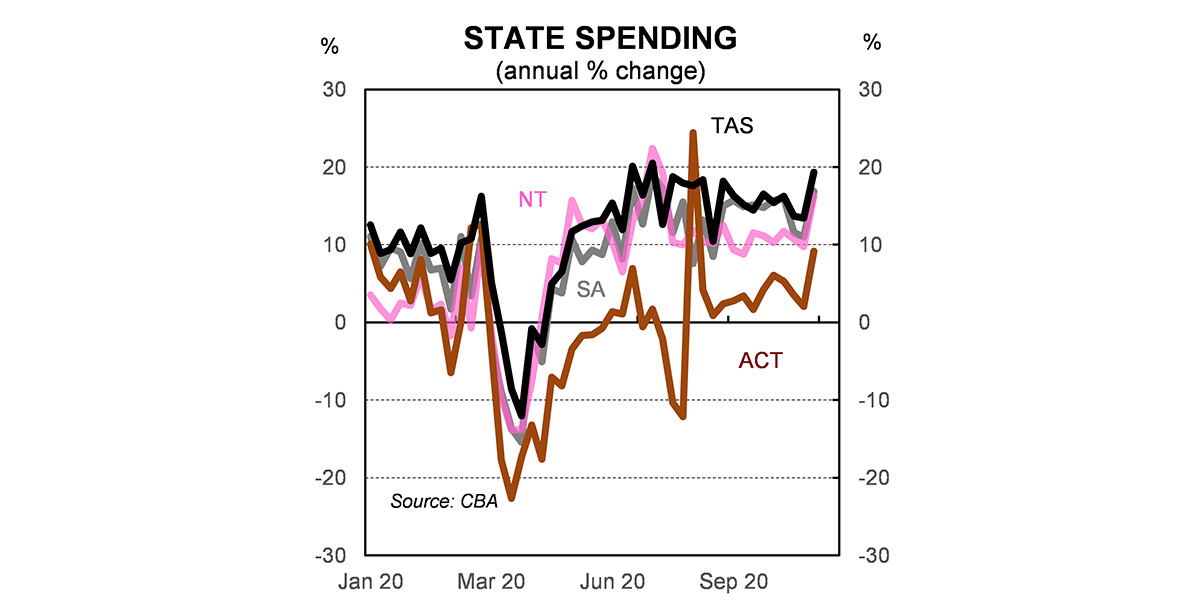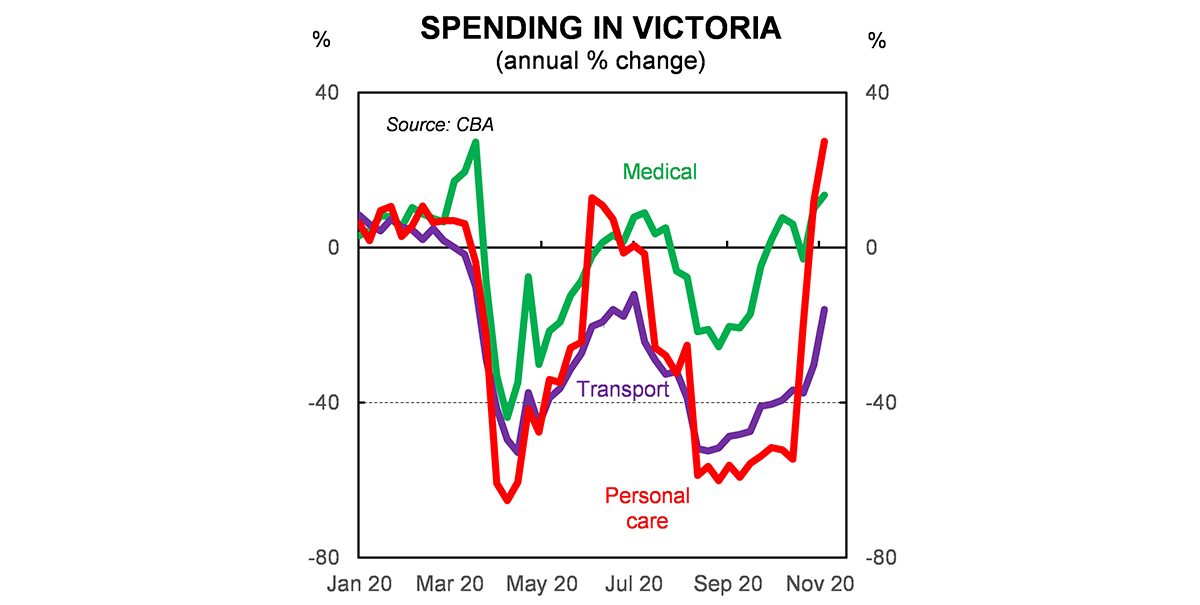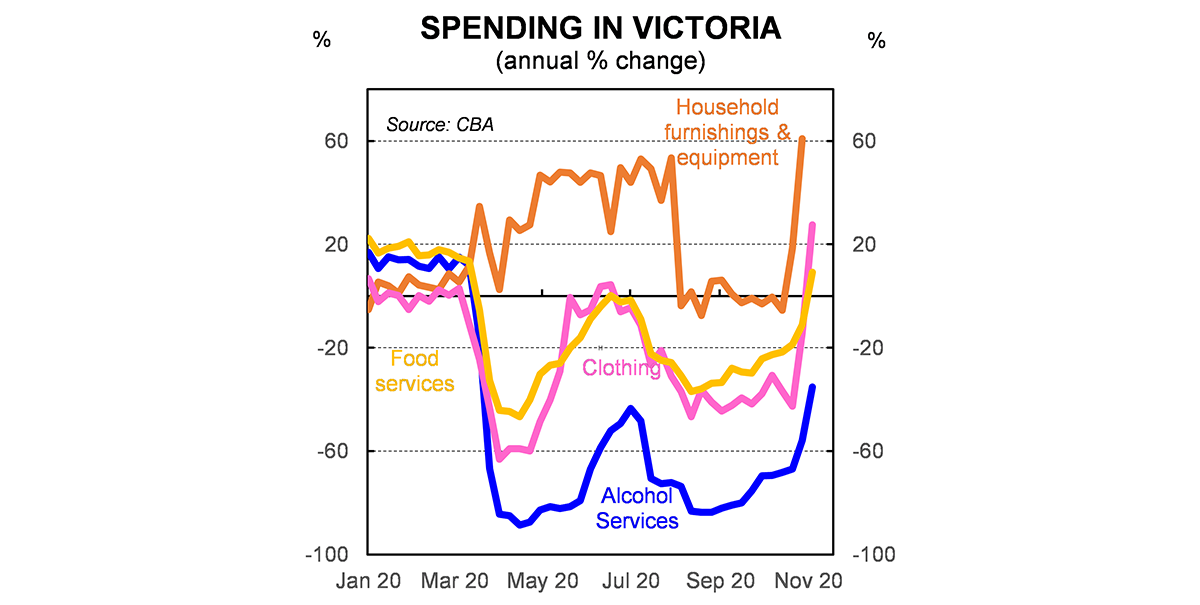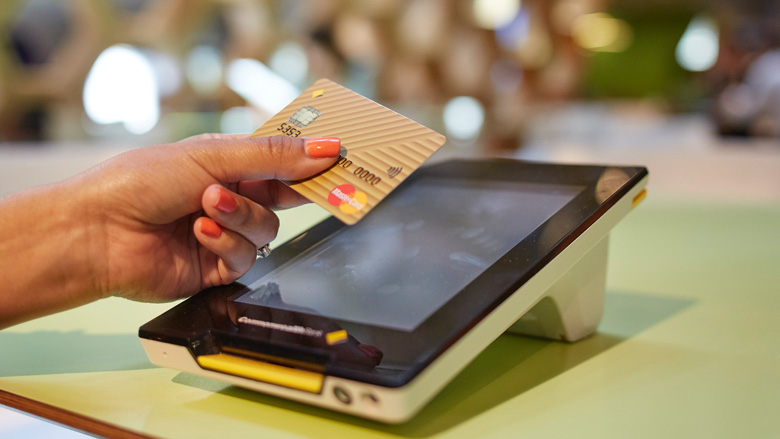CBA’s Senior Economist Belinda Allen said: “The easing of restrictions in Victoria, and more open and the prospect of more open internal borders, saw card spending surge.
“There was a lift in both online and in-store spending showing the breadth of the rise.”
Ms Allen said that the lift in overall spending highlights the importance of confidence in the health outcome and the level of income support in the Australian economy at present.
“Card spending on both goods and services lifted over the past week, but services spending was the dominant driver. Services spending on cards rose by 5 per cent compared to a year ago and was the first positive print since the nationwide lockdown in March.”
In Victoria, annual card spend was up 15 per cent for week ending Friday, 6 November as compared to the same period last year. The other states also saw a lift in spending over the past week.
Click graphs to enlarge.


“Looking at Victoria, pent up demand and an easing of restrictions saw spending rise in all but one category we track, with communication the exception.
“Eating and drinking out still faces some restrictions but spending in this category is recovering and shows growing confidence in the health outcome,” Ms Allen said.


The table below shows CBA household credit and debit card spending compared to results a year earlier. The information has been developed by CBA’s Global Economic & Markets Research team.






